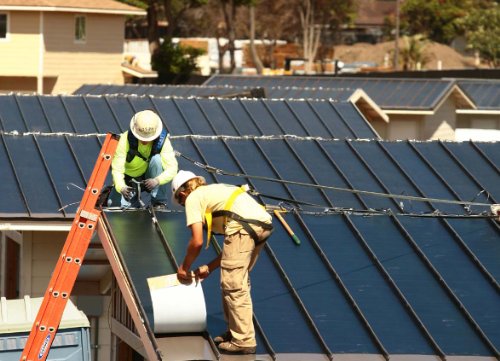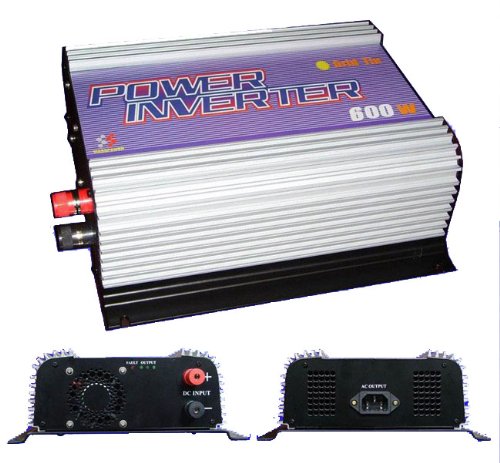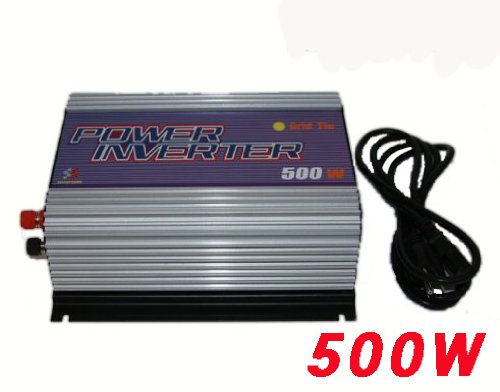The State of California leads the way in renewable energy initiatives and offers generous rebates of 50% for select wind power systems.
The wind power systems described in this article are connected to the utility company, or grid tied, and don't incorporate storage batteries. In California excess power generated by a wind power system can be sold back to the utility (net metering).
The 5 basic requirements for a wind power system:
1. You own your own home.
2. Your property is at least one half acre.
3. Your homeowners association or city/county does not restrict towers.
4. The average wind speed in your area exceeds 9 mph.
5. Your utility allows net metering.
Wind Speed Requirements
Most wind turbines have a start up speed of 8 MPH but require a minimum average wind speed of 12 MPH to generate an appreciable amount of electricity for your home. Not surprisingly, the highest average wind speeds in California are registered within 25 miles of the Pacific Coast.
The minimum height at which wind speed is measured on these wind maps is 30 meters, or 100 feet. Since most residential wind turbine towers are 40-80 feet in height, your actual wind speed will be less than what is shown on the maps. As tower heights increase, the wind becomes faster and less turbulent. A 20 foot increase in tower height, from 60 to 80 feet, can increase the output of your wind turbine by as much as 36%.
Lot Size Requirements
A wind turbine needs at least half an acre of land to ensure it will be located far enough away from wind impeding obstructions such as trees, your house and other out-buildings. The tower must also extend 20 feet above these obstructions. Generally speaking, the higher the tower, the more land is required by local zoning laws.
California Wind Power Tax Incentives and Rebates
Currently the Federal government doesn't offer a wind power tax credit. However, California offers generous rebates for eligible wind turbines at the rate of .50 a watt for the first 7.5kW (7,500 watts) of rated output and .50 per watt thereafter up to 50kW (50,000 watts). The complete list of eligible equipment is available at: http://www.consumerenergycenter.org/cgi-bin/eligible_smallwind.cgi
For instance, Southwest Windpower's Whisper 200, 1,000 watt wind turbine would qualify for a ,500 rebate. This represents 50% of the total ,000 cost for a wind turbine, inverter and 80' tower.
Wind Turbine Output
The Whisper 200 turbine will produce 158kW per month at 12 MPH. The higher the average wind speed, the more power it will generate. For most homes, 158kW represents only 20-25% of monthly usage. On the other hand, your electric bill will immediately drop by 20-25% and the cost for electricity generated by the wind turbine 20 years from now will be the same as it is today.
At the other end of the residential wind power spectrum is the Bergey BWC 10,000 watt wind turbine. A 10Kw system is capable of providing all the necessary power for most homes. The initial cash outlay for a system of this size is around ,000 including installation. This is before the ,000 rebate from the State of California.
Wind System Towers
Three types of towers are most commonly used for residential wind turbines. The most expensive is the monopole tower. This is a scaled down version of the towers used on wind farms.
The second type is the tilt up tower. The tower is raised using an attached gin pole and is stabilized with guy-wires.
The third is a lattice tower also stabilized with guy-wires. A much taller version of this tower is used by television stations.
Advantages of Wind Power
The cost/benefit of a wind power system makes them relatively inexpensive to own. With the rebate factored in, a 10Kw system will pay for itself in as little as 6 or 7 years. Mechanically, the simple design is easy to install and requires little if any maintenance. Although you'll have your share of calm days, you'll also have plenty of windy California nights when you're wind turbine is spinning away while your neighbor's solar array is literally collecting dust.








